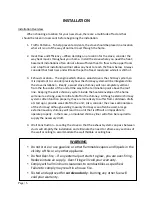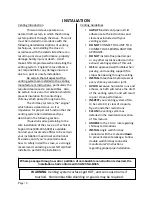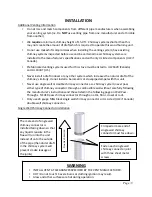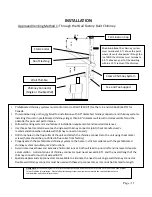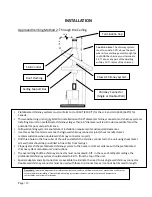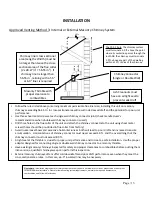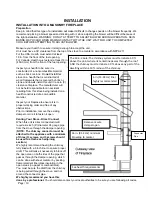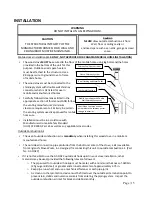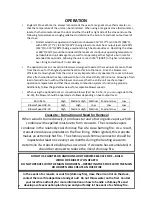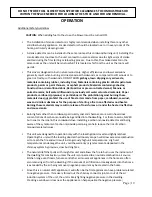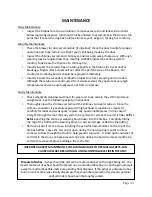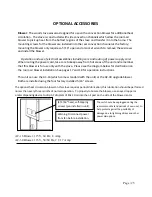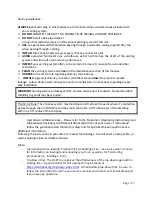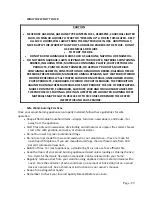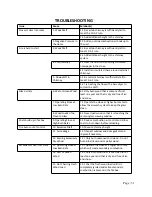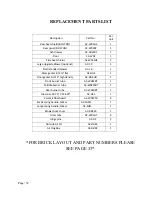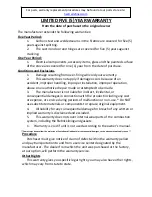
Page | 20
ultimately,
an
unrestricted
source
of
outside
combustion
may
be
necessary
for
proper
unit
function.
•
If
the
unit
is
connected
to
outside
air,
be
certain
to
monitor
the
exterior
inlet
to
the
combustion
system
for
icing
or
snow
accumulation.
Allowing
the
outside
air
connection
to
become
restricted
will
result
in
air
starvation
to
the
unit.
Safe
Wood
‐
Burning
Practices
Once
your
wood
‐
burning
appliance
is
properly
installed,
follow
these
guidelines
for
safe
operation:
Keep
all
flammable
househould
items
‐
drapes,
furniture,
newspapers,
and
books
‐
far
away
from
the
appliance.
Start
fires
only
with
newspaper,
dry
kindling
and
all
natural
or
organic
fire
starters.
Never
start
a
fire
with
gasoline,
kerosene,
or
charcoal
starter.
Do
not
burn
wet
or
green
(unseasoned)
logs.
Do
not
use
logs
made
from
wax
and
sawdust
in
your
wood
stove
‐
they
are
made
for
open
hearth
fireplaces.
If
you
use
manufactured
logs,
choose
from
those
made
from
100
percent
compressed
saw
dust.
Build
hot
fires.
For
most
appliances,
a
smoldering
fire
is
not
a
safe
or
efficient
fire.
Keep
the
doors
to
your
wood
‐
burning
appliance
closes
unless
loading
or
stoking
the
live
fire.
Harmful
chemicals,
like
carbon
monoxide,
can
be
released
into
your
home.
Regularly
remove
ashes
from
your
wood
‐
burning
appliance
into
a
metal
container
with
a
cover.
Store
the
container
of
ashes
outdoors
on
a
cement
or
brick
slab
(not
on
a
wood
deck
or
near
wood).
See
ash
removal
instructions
in
your
owner’s
manual.
Keep
a
fire
extinguisher
handy.
Remember
to
check
your
local
air
quality
forecast
before
you
burn.

